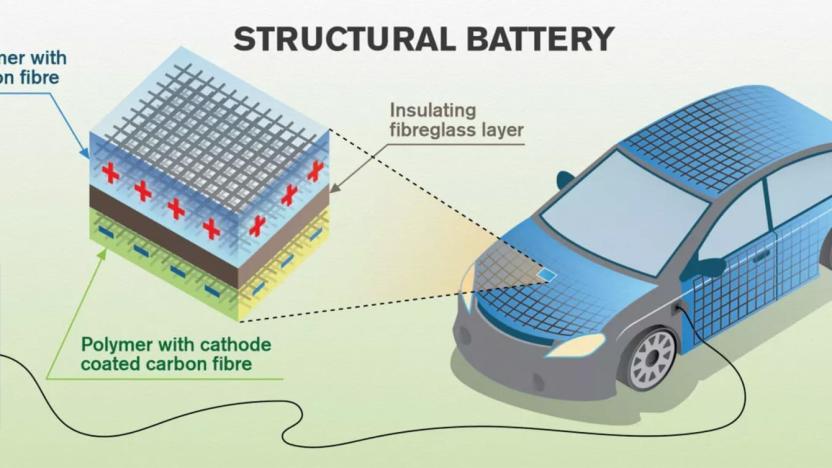ChalmersUniversity
Latest

Electric cars could store energy in their carbon fiber bodies
Electric cars typically need larger, denser batteries if they're going to meet the range expectations of people used to gas-powered vehicles, but available space and weight limit the size of that battery. Researchers might have a solution: turn the very body of the car into a battery. They've conducted a study showing that carbon fiber shells could serve as battery electrodes. The trick is to optimize the size and orientation of the fibers so there's a good balance between stiffness and the electrochemical traits needed to store energy.

Researchers estimate the human cost of emissions cheating (updated)
We've known for a while that there is a link between the emissions coming out of a car's tailpipe and various cardiovascular conditions. In fact, diesel cars are significantly worse for people's life expectancy than their petrol-powered equivalents. Now, a coalition of researchers have tried to put a figure on the number of otherwise avoidable deaths caused by these vehicles: 10,000 a year.

Smoother movements help robots save a lot of energy
Eliminating the herky-jerky movements of robots isn't just good for comforting nervous humans... it helps the robots, too. Researchers have developed smooth movement algorithms that slow the acceleration and deceleration of robots, saving as much as 40 percent of the energy they'd normally use. The trick is to order tasks in a way that lets robots move at their own pace without colliding into each other. Factory robots typically rush through tasks in a rigid order, only to wait for their fellow automatons to catch up. Here, they're more flexible as to when and how quickly they get things done.

EU backs consortium in billion-euro program to hasten graphene development
If you're anxious for all this talk about graphene to materialize into products that can be tucked away in your shoulder bag, you're certainly not alone. A consortium dubbed the Graphene Flagship, which includes heavyweights such as Nokia and the University of Cambridge, has been selected by the European Union to participate in a program that'll endow it with 1 billion euros over 10 years to make that happen. The hope is that pairing up researchers and businesses will hasten the development of material and component manufacturing processes for the carbon-based substance, and make it possible for graphene to find its way into products such as flexible electronics, batteries and faster processors. During the first 30 months of the program, 126 academic and industrial research groups spread throughout 17 European countries will be coordinated by Chalmers University of Technology and have their collective pockets filled with an initial 54 million euro budget to kick things off. It's a long haul, but here's hoping Espoo's Morph concept inches a little closer to reality. [Image credit: Nokia]


